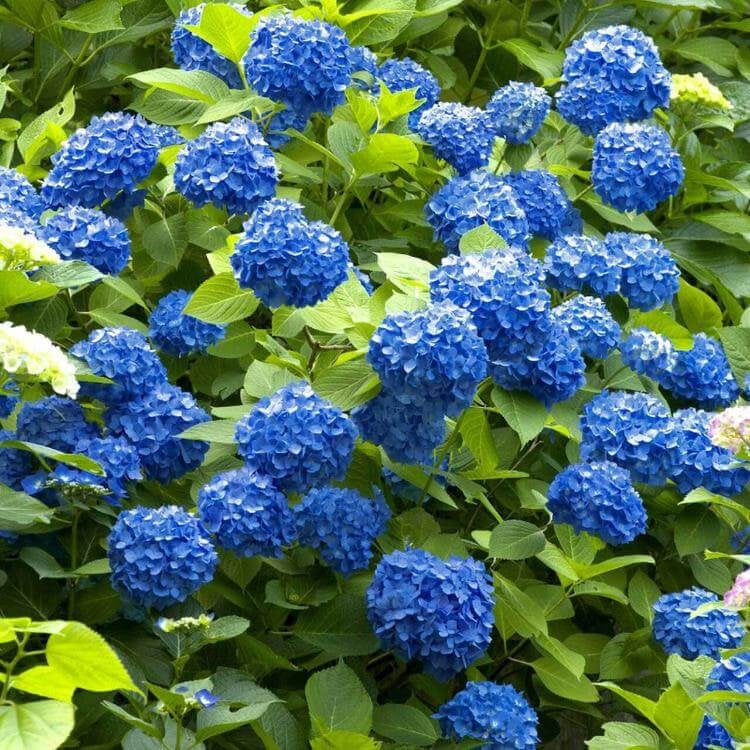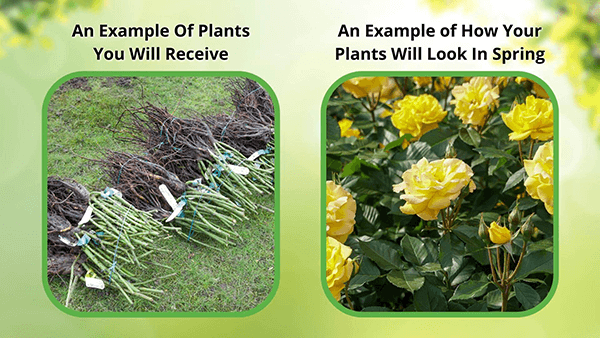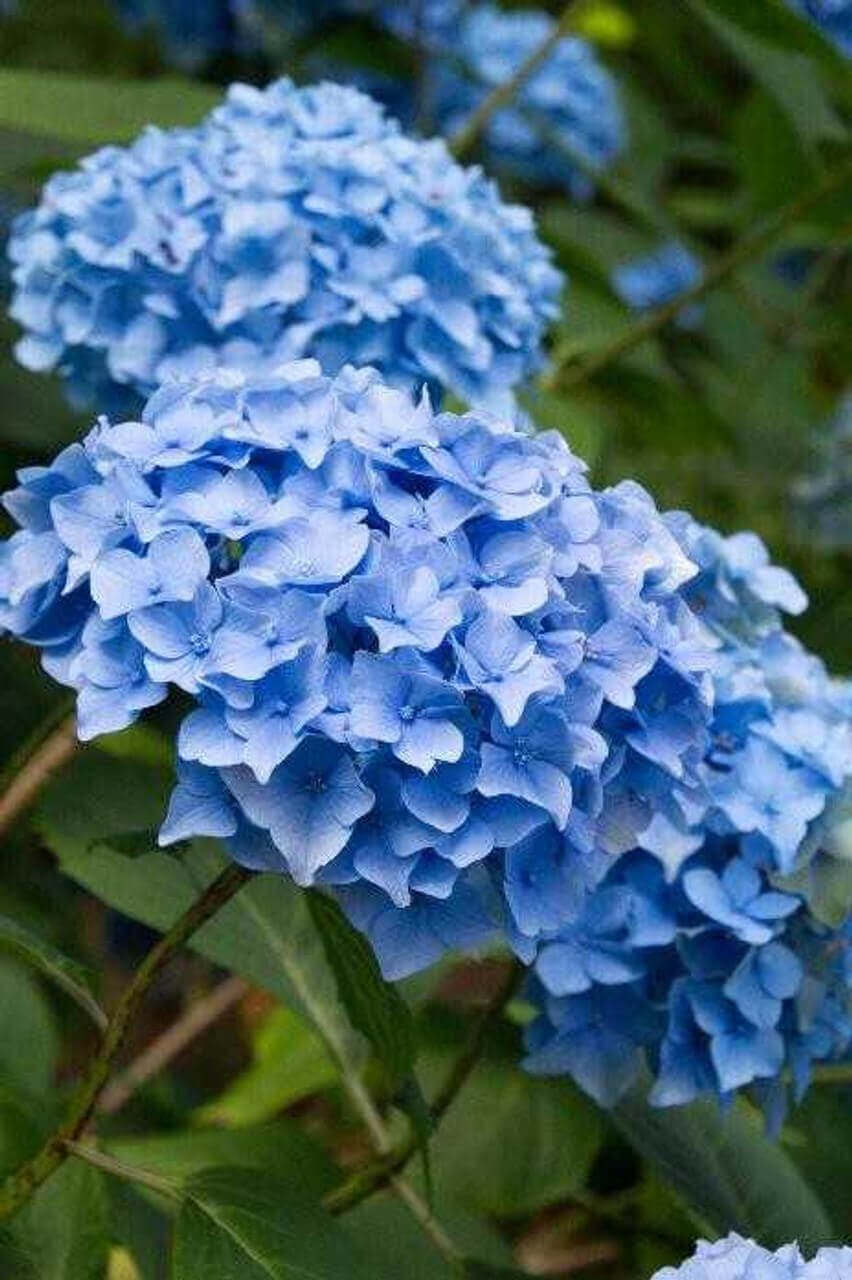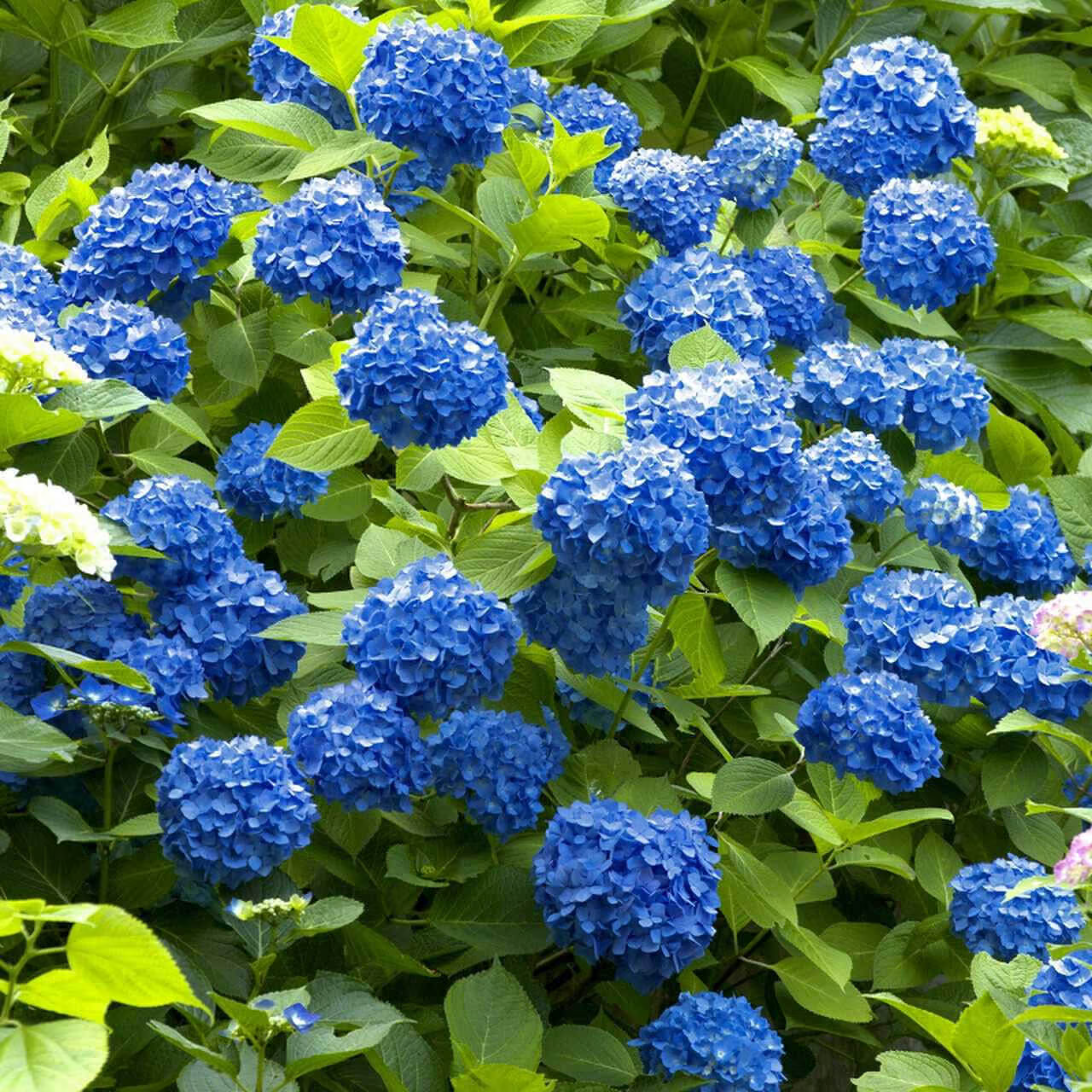



Blue Hydrangea
Stunning blue blooms add color
Thrives in diverse soil conditions
Long-lasting, vibrant floral displays
Thrives in
ZONE 5ZONE 6ZONE 7ZONE 8ZONE 9This plant ships:
7-10 Days1 Year Guarantee on all plants
Blue Hydrangea - Hydrangea macrophylla
The Blue Hydrangea (Hydrangea macrophylla) is native to regions of Japan however is a popular favorite among gardeners across North America. It is a deciduous shrub and naturally grows in a rounded bush shape. This variety of hydrangea is affected by soil pH. Acidic soils will bear blue flowers whereas alkaline soils will bear pink to purple flowers.
It grows to an impressive 6ft tall and 6 ft across making an ideal specimen shrub for your garden with its striking blooms. The foliage of this impressive plant is lustrous and bright green with serrated edges, which provides an appealing contrast to its showy flower clusters.
Plant Details - Blue Hydrangea
Family: Hydrangeaceae
Hardiness Zones: 5–9
Light Requirement: Partial shade
Water Needs: Moderate to high
Height: 3 - 6 feet
Spread: 3 - 6 feet
Growth Rate: Moderate
Bloom Time: Late spring through summer
Flower Color: Blue in acidic soils, pink or purple in neutral to alkaline soils
Wildlife Value: Provides nectar for bees and butterflies
After flowering begins, the plant will continue to produce new flower stems for about 2 months. The flower clusters of this shrub are massive and round, similar to a pompom, and they develop only on the old wood that developed the previous year. Each bloom cluster is longlasting and can make a stunning addition to a bouquet for your home or to give to a friend or family member.
The Blue Hydrangea is a versatile shrub and can used for various functions in the garden. It can be planted alone as a focal point, or in mass with other individuals. It can also be used a flowering hedge; however, it is deciduous and will not provide as much privacy during the winter months.
Landscape Uses and Maintenance - Blue Hydrangea
It prefers medium moisture, well-drained soils. Plant in an area of part shade. It will tolerate full sun if soil is maintained with consistent moisture. It is best practice to mulch plants with 3 in of shredded bark each year to help maintain soil moisture.
To adjust the bloom color, soil amendments must be done well in advance of flowering in early spring or the previous autumn. By adding aluminum sulfate to the soil, the flowers become bluer, and if you add lime, the flowers present in a pinker tone. Aside from soil adjustments to achieve flower color, this plant is low maintenance and does not require much pruning.
Noteworthy Characteristics
Showy flower clusters, adjustable bloom color, attracts pollinators
Plant this impressively showy shrub as a center piece or a border hedge and enjoy prolific blooms year after year. Shop for Blue Hydrangea shrubs online at TN Nursery. For 68 years, we have served the landscaping industry and homeowners with specimen plants.
This Is How Your Plants Will Look upon Delivery

Bloom Season
Summer
Bloom/Foliage Color
Blue
Height at Maturity
Under 10 Feet
Care
Blue hydrangeas thrive in well-drained, moist soil with a slightly acidic pH. It's important to regularly water them to keep the soil moist, especially during dry spells. After they bloom, prune them to maintain their shape and promote new growth. In the spring, be sure to fertilize them to encourage vibrant blooms.
Plant Reproduction
Blue Hydrangea spreads through underground rhizomes and root ball division.
Plant bare-root shrubs during the more excellent spring or fall months, from November through April. Dig a hole twice as wide as the root system and slightly more profound than its height. Position the shrub so that the top of the roots is level with the ground, and put back the soil dug over the roots. Apply a 2-3 inch layer of mulch around the base to retain moisture and suppress weeds, ensuring the mulch does not touch the shrub's stem. Water regularly, especially during the first year, to establish strong roots. Prune shrubs as needed to promote healthy growth. In the spring, fertilize with a balanced, slow-release fertilizer suited to the specific needs of the shrub.
Shipping date depends on the date displayed and chosen when you order from the product's page.
We only accept returns on plants verified dead. If you think your plants have died, we offer a 1 year warranty, please use this File a Claim Link to verify dead plants and start with return warranty process.






Landscape Enhancement:
Perfect for creating striking garden features such as hedges or focal points. Its dramatic blooms and lush foliage can transform and elevate any landscape design.
Showy Sepals:
Unlike most flowers, Blue Hydrangea’s striking blooms are made up of colorful sepals rather than petals. These petal-like structures are sturdier and protect the tiny flowers hidden beneath them.
Cut Flower Potential:
Blue Hydrangea makes stunning cut flowers for indoor arrangements. Its elegant blooms bring a touch of garden beauty inside your home, perfect for fresh floral displays.
Height and Coverage:
Blue Hydrangea can be used to create height and depth in your garden, with some varieties climbing up to 50 feet, making them perfect for covering fences or scaling trees.
Caring Tips
How do I care for my Blue Hydrangea?
Each box contains detailed care instructions and information about your product. But here's the basics.
Care Tips
Blue hydrangeas thrive in well-drained, moist soil with a slightly acidic pH. It's important to regularly water them to keep the soil moist, especially during dry spells. After they bloom, prune them to maintain their shape and promote new growth. In the spring, be sure to fertilize them to encourage vibrant blooms.
Light Requirements
Blue Hydrangeas thrive in partial shade to full sun. They favor morning sun and afternoon shade to shield delicate blooms from intense heat. Consistent moisture is essential; harsh, direct sunlight should be avoided to prevent wilting.
Hardy Planting Zones
5 • 6 • 7 • 8 • 9
Header
Use this content to share information about your store and products.
Frequently Asked Questions
How often should I water my plants?
How do I know if my plant is getting too much or too little sunlight?
What should I do to prepare my plants for winter?
What are the signs that my plant needs fertilizing?
How can I prevent pests from damaging my plants?
How do I choose the right plant for my climate zone?






